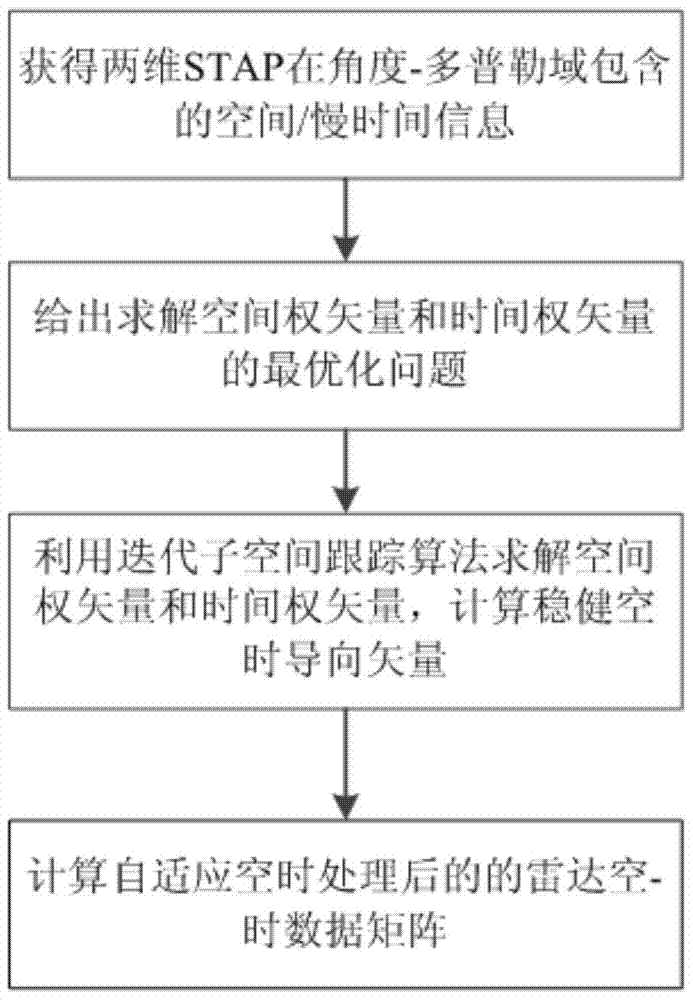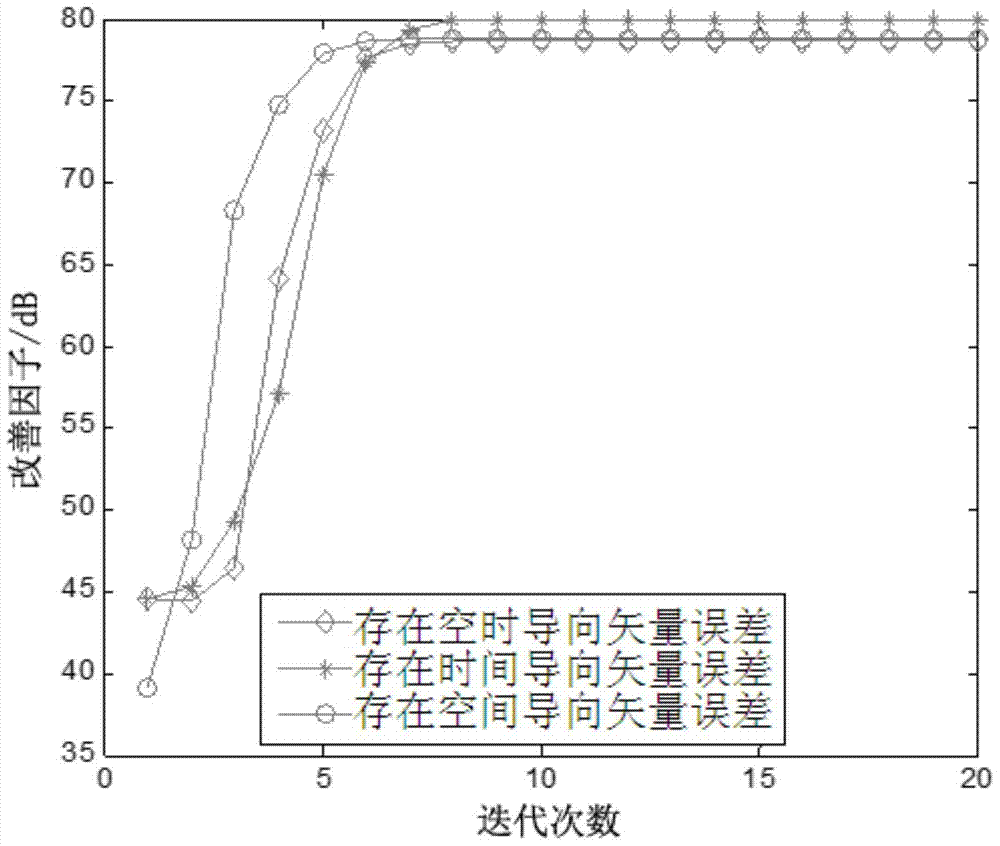Robust Space-Time Adaptive Processing Method for Radar Based on Iterative Subspace Tracking Algorithm
A space-time adaptive and tracking algorithm technology, applied in the field of radar, can solve the problems of reducing the number of data, affecting the effect of space-time adaptive processing, etc., to achieve the effect of low time complexity and robust space-time adaptive processing process
- Summary
- Abstract
- Description
- Claims
- Application Information
AI Technical Summary
Problems solved by technology
Method used
Image
Examples
Embodiment Construction
[0028] Reference figure 1 , The radar robust space-time adaptive processing method based on the iterative subspace tracking algorithm of the present invention includes the following specific steps:
[0029] Step 1. First, it is known that the space-time data matrix X received by the radar is:
[0030]
[0031] Among them, x(n,k) is the received data of the nth antenna and the kth pulse, n=1, 2,..., N, N is the number of antennas, k=1, 2,..., K, K is the number of pulses;
[0032] Then, according to the space-time data matrix X received by the radar, the two-dimensional space-time adaptive processing of the space / slow time information contained in the angle-Doppler domain is obtained by the maximum likelihood estimation principle, that is, the space of P distance units is obtained. -Time data matrix, where the space-time data matrix X of the p-th distance unit p for:
[0033]
[0034] Where x p (n,k) is the received data of the p-th distance unit in the received data of the nth antenn...
PUM
 Login to View More
Login to View More Abstract
Description
Claims
Application Information
 Login to View More
Login to View More - R&D
- Intellectual Property
- Life Sciences
- Materials
- Tech Scout
- Unparalleled Data Quality
- Higher Quality Content
- 60% Fewer Hallucinations
Browse by: Latest US Patents, China's latest patents, Technical Efficacy Thesaurus, Application Domain, Technology Topic, Popular Technical Reports.
© 2025 PatSnap. All rights reserved.Legal|Privacy policy|Modern Slavery Act Transparency Statement|Sitemap|About US| Contact US: help@patsnap.com



